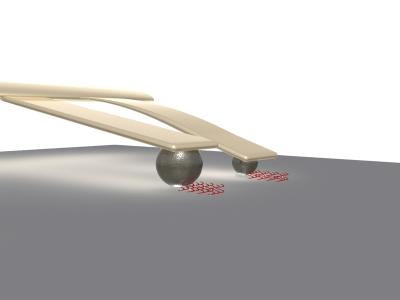A new, less expensive nanolithography technique has been developed by researchers at the North Carolina State University (NCSU).
 This technique uses no electronic components to bring the cantilevers into contact with the substrate surface. Credit: Albena Ivanisevic, North Carolina State University
This technique uses no electronic components to bring the cantilevers into contact with the substrate surface. Credit: Albena Ivanisevic, North Carolina State University
Dr. Marcus A. Kramer is the lead author of the paper, which was co-authored by Dr. Albena Ivanisevic, an associate professor of the joint biomedical engineering program at NC State and the University of North Carolina at Chapel Hill, and an associate professor of materials science and engineering at NC State.
According to Ivanisevic, the new nanolithography technique may be employed for producing chips that can be used in biological sensors designed for identifying target molecules linked to particular medical conditions.
Silicon strips of 150 µ length are used as cantilevers. Naturally occurring spores or polymer spheres are used as tips for these cantilevers. When exposed to increased humidity, these spores and spheres absorb water. Ink is coated on these spores and spheres and then dried.
Under controlled conditions, such as in a chamber, the tips of the cantilever become heavy and are dragged down when the spores or spheres become heavy due to absorption of water under increased humid conditions.
The patterns made by the cantilever can be controlled by controlling the size of the spores or spheres. This can be done by manipulating the humidity. Under high humidity conditions, small spheres absorb more water and are dragged down to come into contact with the surface of the substrate, while larger spheres do not absorb more water under these conditions. Larger spheres or spores absorb more water under low humidity conditions.
Further, the spores and sphere polymers vary in qualities regarding water absorption. This property can be used to control the cantilevers in the desired fashion to obtain the required lithograph. As this technique does not depend upon electronic components, it is comparatively less-expensive.
The next phase of the research intends to fabricate lithographic patterns for tissue regeneration.